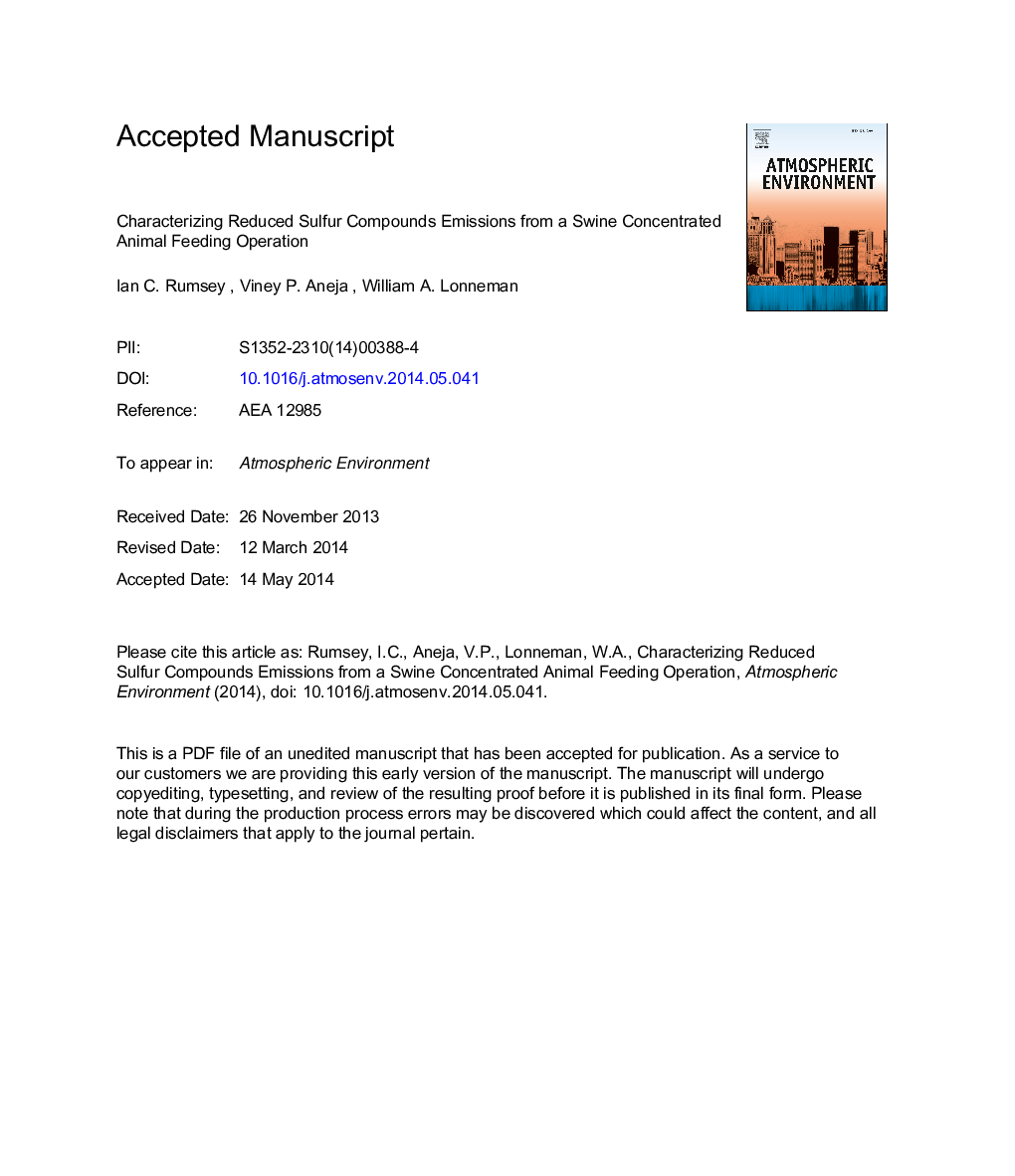| Article ID | Journal | Published Year | Pages | File Type |
|---|---|---|---|---|
| 6339628 | Atmospheric Environment | 2014 | 60 Pages |
Abstract
Reduced sulfur compounds (RSCs) emissions from concentrated animal feeding operations (CAFOs) have become a potential environmental and human health concern, as a result of changes in livestock production methods. RSC emissions were determined from a swine CAFO in North Carolina. RSC measurements were made over a period of â1 week from both the barn and lagoon during each of the four seasonal periods from June 2007 to April 2008. During sampling, meteorological and other environmental parameters were measured continuously. Seasonal hydrogen sulfide (H2S) barn concentrations ranged from 72 to 631 ppb. Seasonal dimethyl sulfide (DMS; CH3SCH3) and dimethyl disulfide (DMDS; CH3S2CH3) concentrations were 2-3 orders of magnitude lower, ranging from 0.18 to 0.89 ppb and 0.47 to 1.02 ppb, respectively. The overall average barn emission rate was 3.3 g dayâ1 AUâ1 (AU (animal unit) = 500 kg of live animal weight) for H2S, which was approximately two orders of magnitude higher than the DMS and DMDS overall average emissions rates, determined as 0.017 g dayâ1 AUâ1 and 0.036 g dayâ1 AUâ1, respectively. The overall average lagoon flux was 1.33 μg mâ2 minâ1 for H2S, which was approximately an order of magnitude higher than the overall average DMS (0.12 μg mâ2 minâ1) and DMDS (0.09 μg mâ2 minâ1) lagoon fluxes. The overall average lagoon emission for H2S (0.038 g dayâ1 AUâ1) was also approximately an order of magnitude higher than the overall average DMS (0.0034 g dayâ1 AUâ1) and DMDS (0.0028 g dayâ1 AUâ1) emissions. H2S, DMS and DMDS have offensive odors and low odor thresholds. Over all four sampling seasons, 77% of 15 min averaged H2S barn concentrations were an order of magnitude above the average odor threshold. During these sampling periods, however, DMS and DMDS concentrations did not exceed their odor thresholds. The overall average barn and lagoon emissions from this study were used to help estimate barn, lagoon and total (barn + lagoon) RSC emissions from swine CAFOs in North Carolina. Total (barn + lagoon) H2S emissions from swine CAFOs in North Carolina were estimated to be 1.22*106 kg yrâ1. The barns had significantly higher H2S emissions than the lagoons, contributing â98% of total North Carolina H2S swine CAFO emissions. Total (barn + lagoon) emissions for DMS and DMDS were 1-2 orders of magnitude lower, with barns contributing â86% and â93% of total emissions, respectively. H2S swine CAFO emissions were estimated to contribute â18% of North Carolina H2S emissions.
Related Topics
Physical Sciences and Engineering
Earth and Planetary Sciences
Atmospheric Science
Authors
Ian C. Rumsey, Viney P. Aneja, William A. Lonneman,
